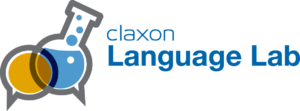 [The Language Lab makes it easy for you to put research to work for you and your mission. Each installment gives you research-backed intel on one specific way you can work happier, smarter, and more effectively. To stay in the know, sign up to get Language Lab missives delivered directly to your inbox.]
[The Language Lab makes it easy for you to put research to work for you and your mission. Each installment gives you research-backed intel on one specific way you can work happier, smarter, and more effectively. To stay in the know, sign up to get Language Lab missives delivered directly to your inbox.]
********************
Should you ask people to “help” or “give”?
The One Thing You Need to Know: People like to help rather than give. Frame your requests with this in mind.
What Works?
The Booth School of Business at the University of Chicago looked at whether people preferred to “help” or “give”. They had two groups of people. Both groups were asked to imagine that they worked a job as a street vendor who sells popsicles. (Why popsicles, we don’t know. Maybe they were also trying to see what people really would do for a Klondike bar!)
Okay, so one group was then asked if they would donate the equivalent of a day’s wage. Another group was asked if they would volunteer for a day, and then told they could work their regular job selling popsicles and donate what they earned.
Turns out, the idea of “volunteering” for a day was much more enticing than donating the equivalent of a day’s wages.
Why? The authors propose that when the ask is initially framed in terms of money, it prompts people to think about what they are giving up. Framing in terms of helping prompts people to think about the impact of their assistance, which they are happy to offer.
This is consistent with research on loss aversion, i.e. we are more unhappy about losses than we are happy about gains. In this scenario, giving up money is a loss and the warm feelings we get from benefiting an organization we care about is a gain. Be careful about which side of that balance you draw attention.
Bottom Line: If you want people to give, ask them to help.
Future research we’d love to see
- A real-world test so we have a better sense of what happens when people envision their actual wages vs. hypothetical wages. The success of the organization One Day’s Wages would lead one to believe that people can get behind the idea of giving a day’s worth of wages. But it might still be true that language that uses “help” is more effective than “give”.
- Research (again, real-world) on the effectiveness of starting with “help” and then switching to “give”. Can you switch or do you have to stick with helping language throughout? Inquiring, inquisitive minds want to know!
Want more?
Peruse the paper that we’re citing here. Sending out a spring appeal? Test this for yourself. Do two versions of your appeal: one using “give” language and one using “help” language. A/B test on 10% of your list and then use whichever version works best. If that sounds daunting, we love testing and are here to help!







 After writing
After writing